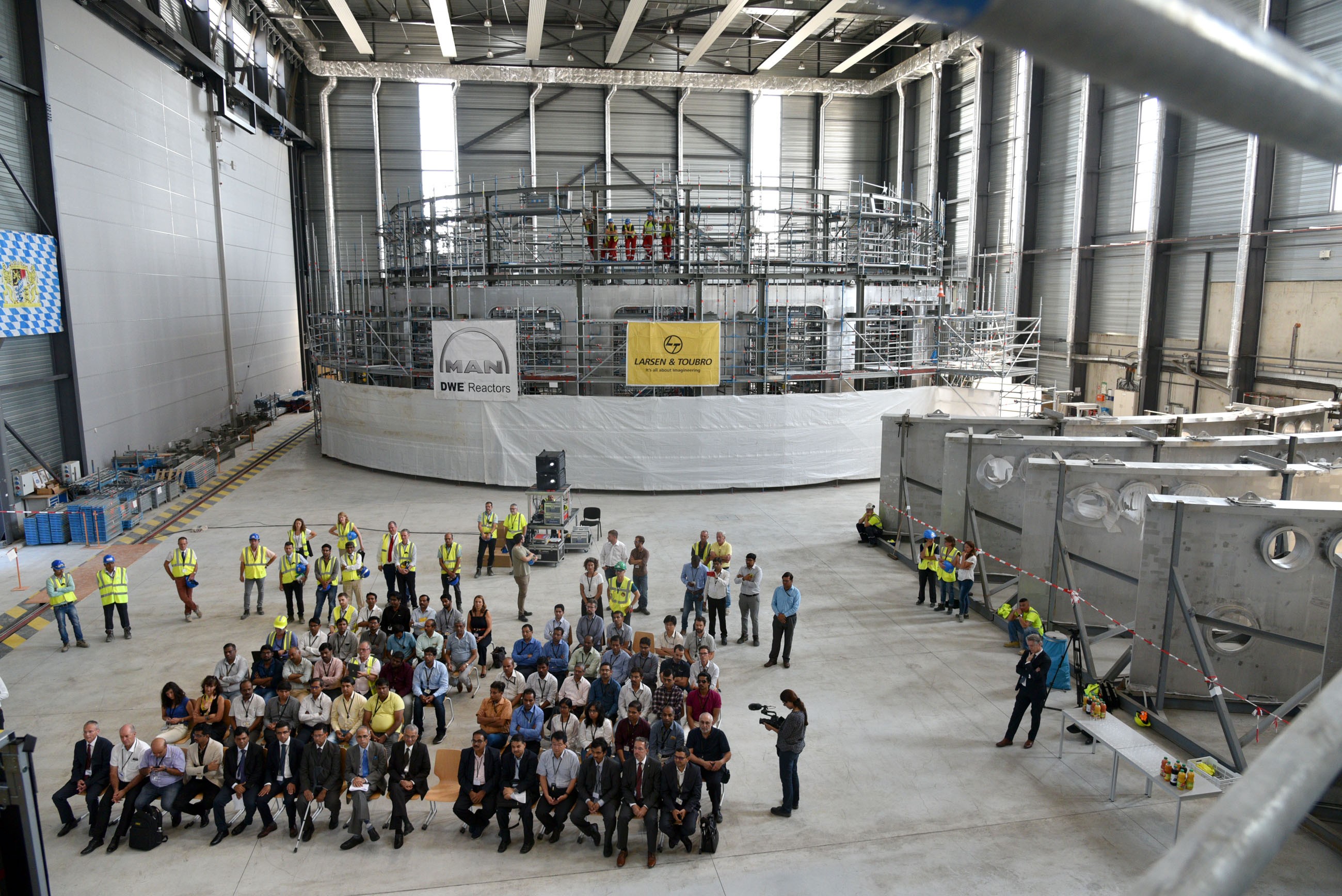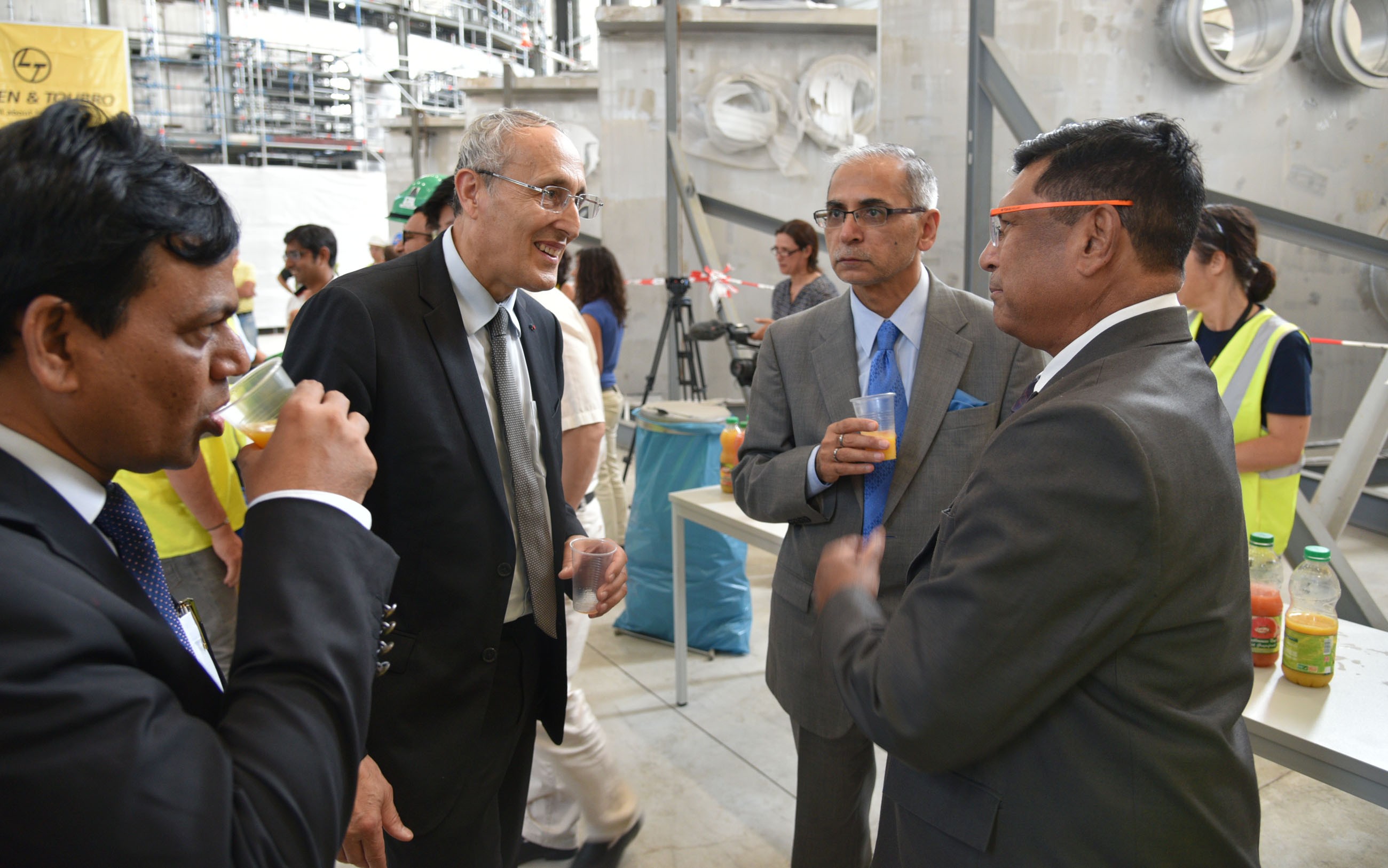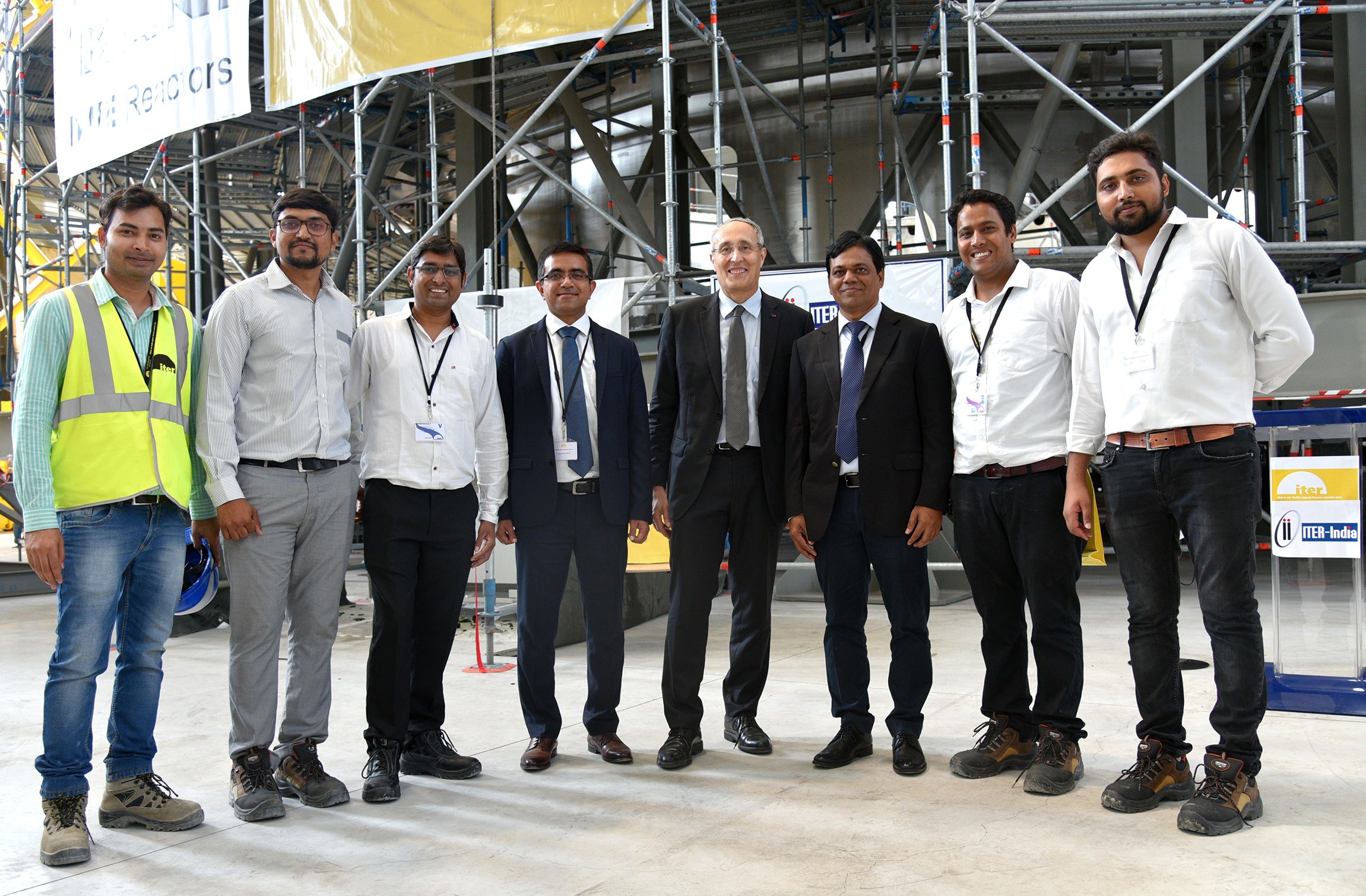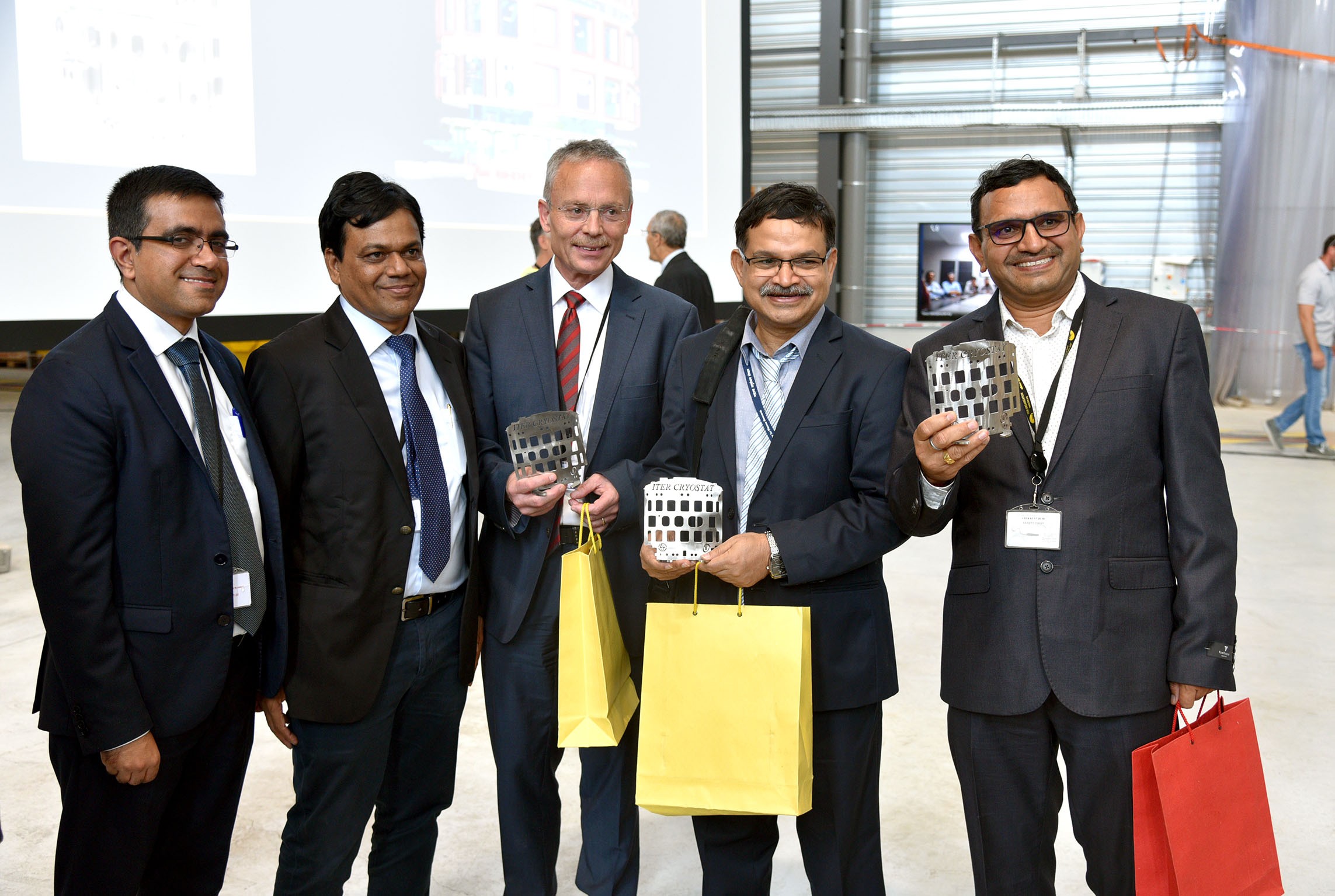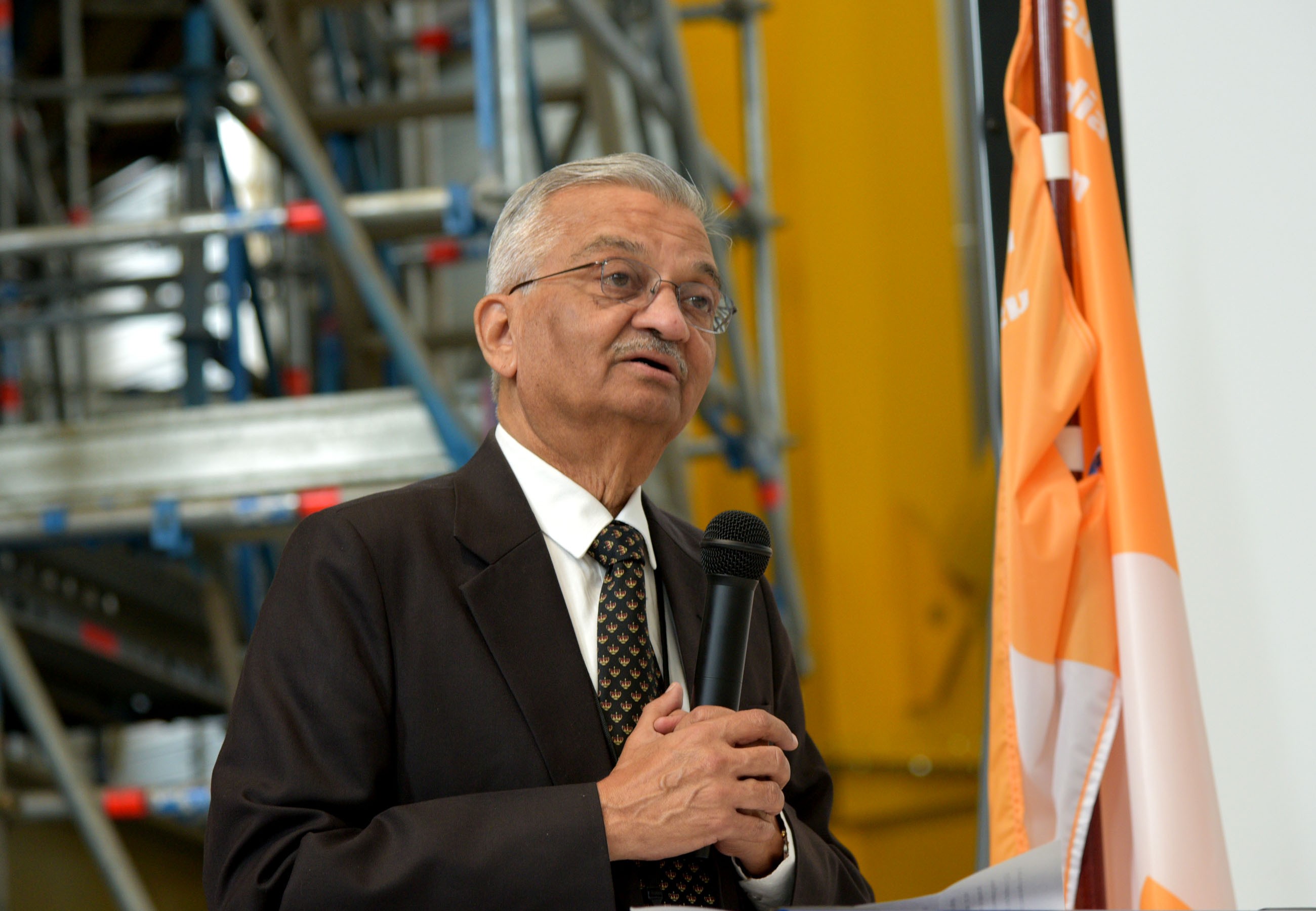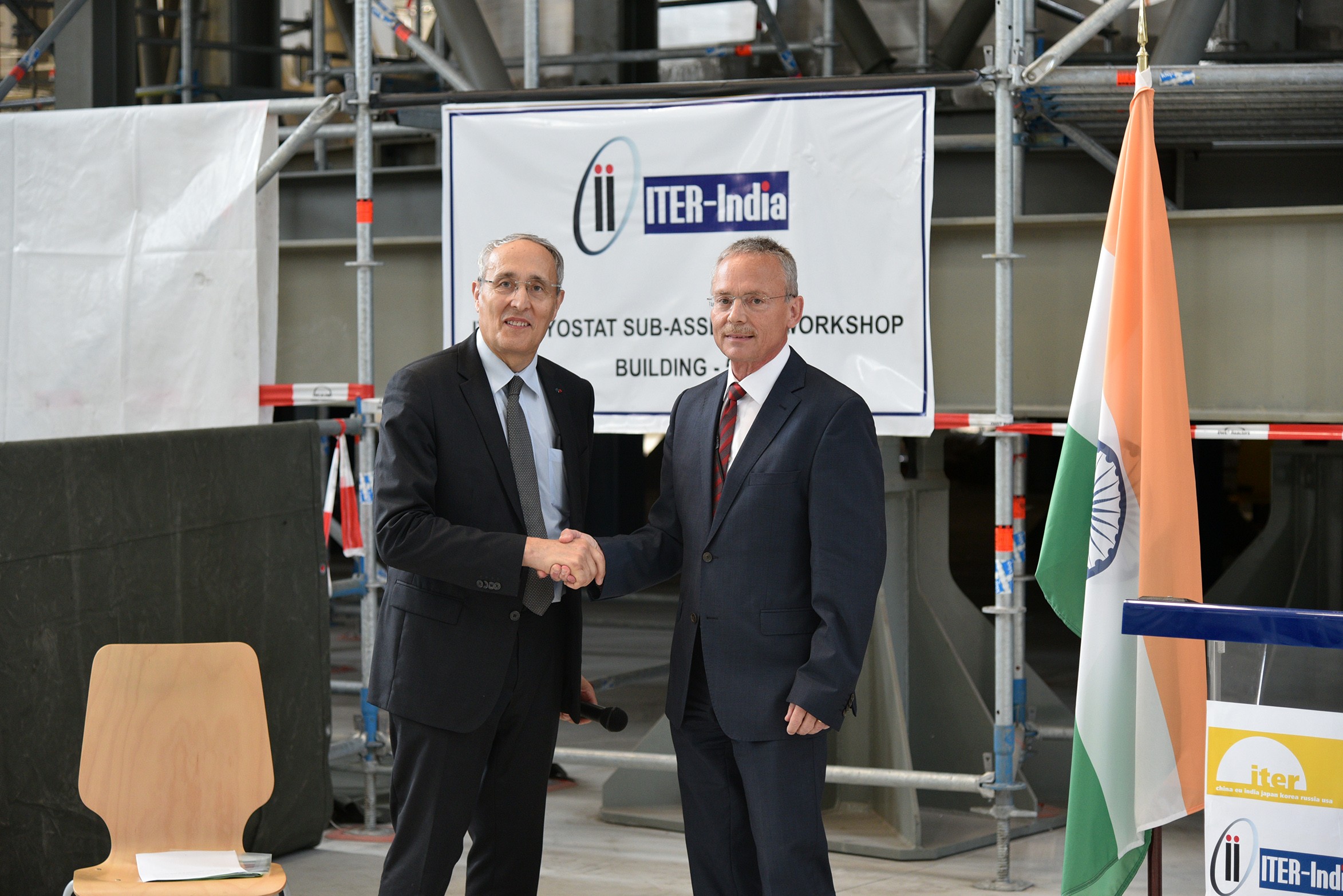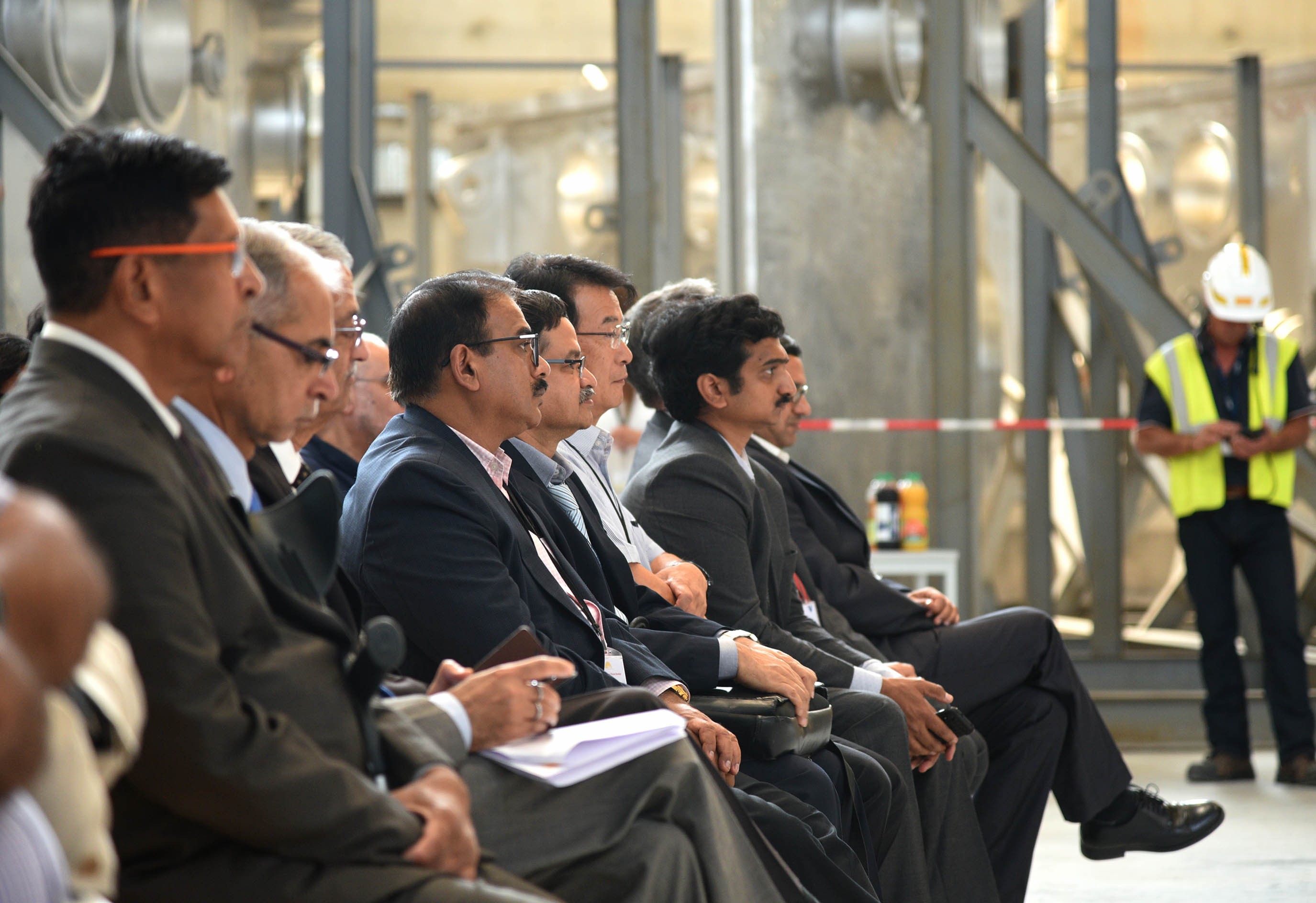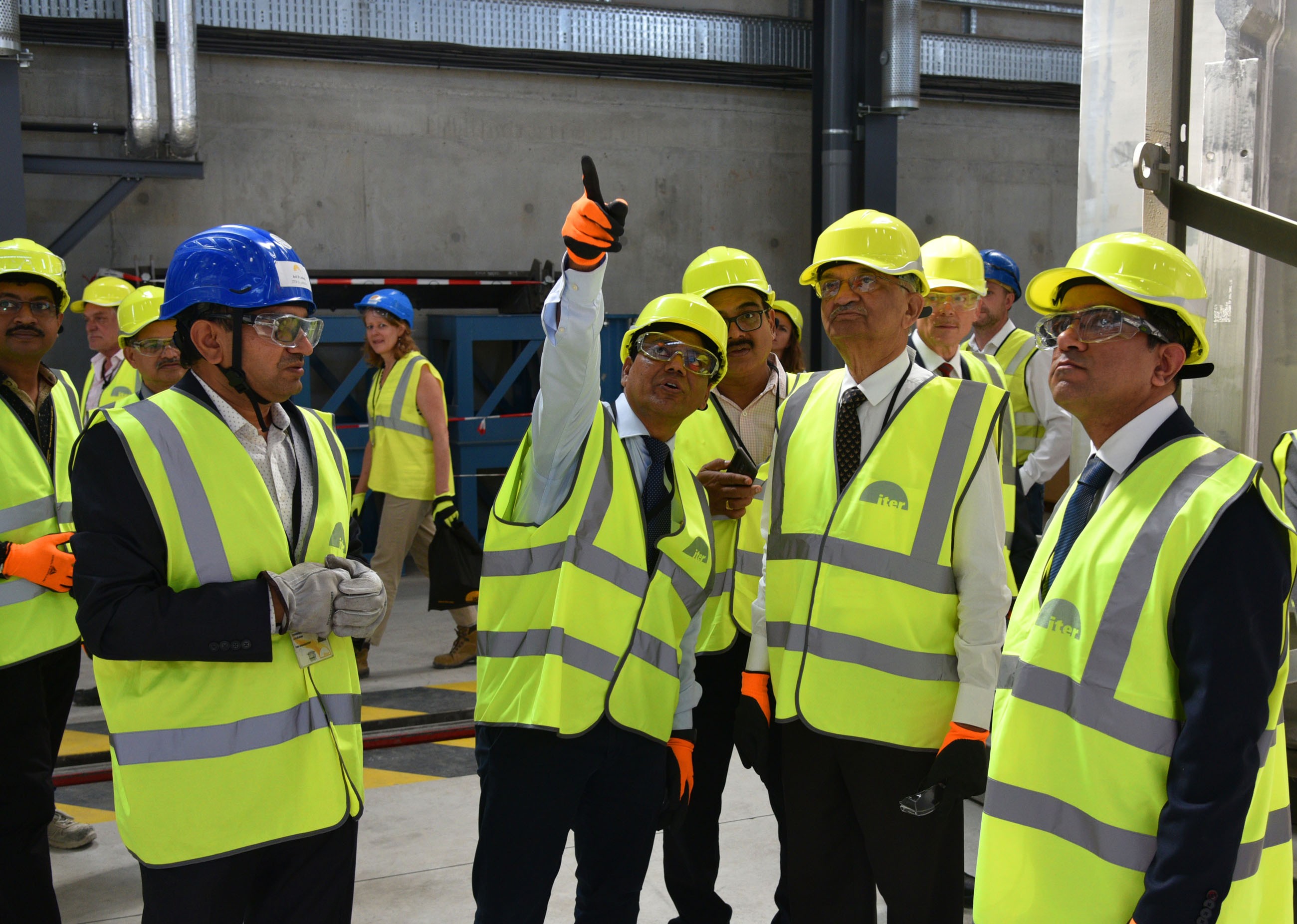A "magic moment"
Cryostat 60% complete
23 Jul 2019
Watch a video of the event here.
ITER Cryostat Group Leader Anil Bhardwaj gives a tour of the recently finalized base section. The 1,250-tonne cryostat base will be the first machine component to be lowered into the assembly pit in March 2020.
When a seafaring vessel is launched, naval tradition requires that a bottle be broken on its hull to invite good luck. Although the ITER cryostat will never take to the sea, it is indeed a vessel—and a most spectacular one at that.
In the Cryostat Workshop, where the India-procured component is assembled and welded, ITER Director-General Bernard Bigot, India's Ambassador to France Vinay Mohan Kwatra, and the former chairman of the Atomic Energy Commission of India, Anil Kakodkar, symbolically smashed a bottle of French champagne on a large chunk of steel representing the ITER cryostat.
The ceremony marked an important milestone in the fabrication of this strategic component: two sections—the base and lower cylinder—are now completed and fully accepted by the ITER Organization, the upper cylinder is being assembled and aligned prior to welding, and half a world away, in the manufacturer's facility, the last segment of the "top lid" is being finalized.
The ITER cryostat is essential to the ITER machine, providing structural support and also acting as a thermos to insulate the Tokamak's magnetic system, at cryogenic temperature, from the warmth of the outside environment.
It is the largest vacuum vessel ever built—30 metres high, 30 metres in diameter, for a pump volume of 8,500 cubic metres. It is also a highly complex structure which must remain absolutely leak tight despite hundreds of "penetrations" that give passage to thousands of feedthroughs and lines for cryogenics, water, electrical power, diagnostics systems, and more.
In his address to the assembled guests, ITER Director-General Bernard Bigot retraced the "formidable technological, industrial and human venture" that the manufacturing of such a unique object represents. "Designing, manufacturing, delivering, assembling and welding this one-of-a kind component has proved a huge challenge for everyone involved."
And everyone involved was there, either in person or through video conference from India: the ITER cryostat team; representatives of ITER India, which is responsible for the procurement of the cryostat; industrial giant Larsen & Toubro Ltd, in charge of forging and machining the elements of the cryostat at its Hazira facility and assembling them on site; and finally the German company MAN Energy Solutions, subcontractor to Larsen & Toubro for on-site welding.
The naval tradition of smashing a bottle of champagne on the hull of a seafaring vessel exceptionally (and temporarily) replaced the Indian "coconut breaking" ceremony that the Cryostat Workshop has often witnessed.
The fabrication of the ITER cryostat, said Vinay Mohan Kwatra, Indian Ambassador to France, represents "a major achievement for Indian manufacturing—whose capabilities are not always acknowledged as they should be." The Ambassador also stressed the unique nature of ITER, a project that is "not for the benefit of one partner or one country, but for the whole of humankind."
For Ujjwal Baruah, who recently succeeded Shishir Deshpande as Head of ITER India, the ceremony was "a magic moment," the culmination of a "long march" which began in 2012 with the signature of the Cryostat Procurement Arrangement with the ITER Organization.
"Through the innumerable challenges we have faced in the manufacturing of the ITER cryostat, we have learned and grown at every step," said Larsen & Toubro Heavy Engineering Joint General Manager Praveen Bhatt, speaking on behalf of the company's Senior Vice-President Y. S. Trivedi.
This "learning process" was also stressed by Rolf Bank, MAN Energy Solutions Head of Site for Deggendorf. The assembly and welding of the cryostat, he said, has made his company take "big steps forward in a whole new area of expertise."
In his opening address, ITER Director-General Bernard Bigot had resituated the fabrication of the cryostat in the broader picture of the ITER Project, which he characterized as "men and women working to the best of their ability in different parts of the world to achieve an utterly ambitious and difficult task—one that is essential for the future of our civilization."
Anil Kakodkar's keynote speech developed along the same lines. For the "father" of the Indian nuclear program, ITER "is our hope for the energy freedom of the world at large and for the development of the large part of humanity that is still undeveloped." The massive international effort that ITER represents is also "the new paradigm that humanity is desperately looking for."
One of the most respected scientific and moral figures in his country, the former chairman of the Indian Atomic Energy Commission and former Secretary to the Indian Government hailed "the stupendous task in which you are engaged." But as he touched on climate change, he also warned: "Fusion must be available before the world reaches the cliff's edge."
Watch a video of the event here.
For more information about the ITER cryostat, see this page on the ITER website.




